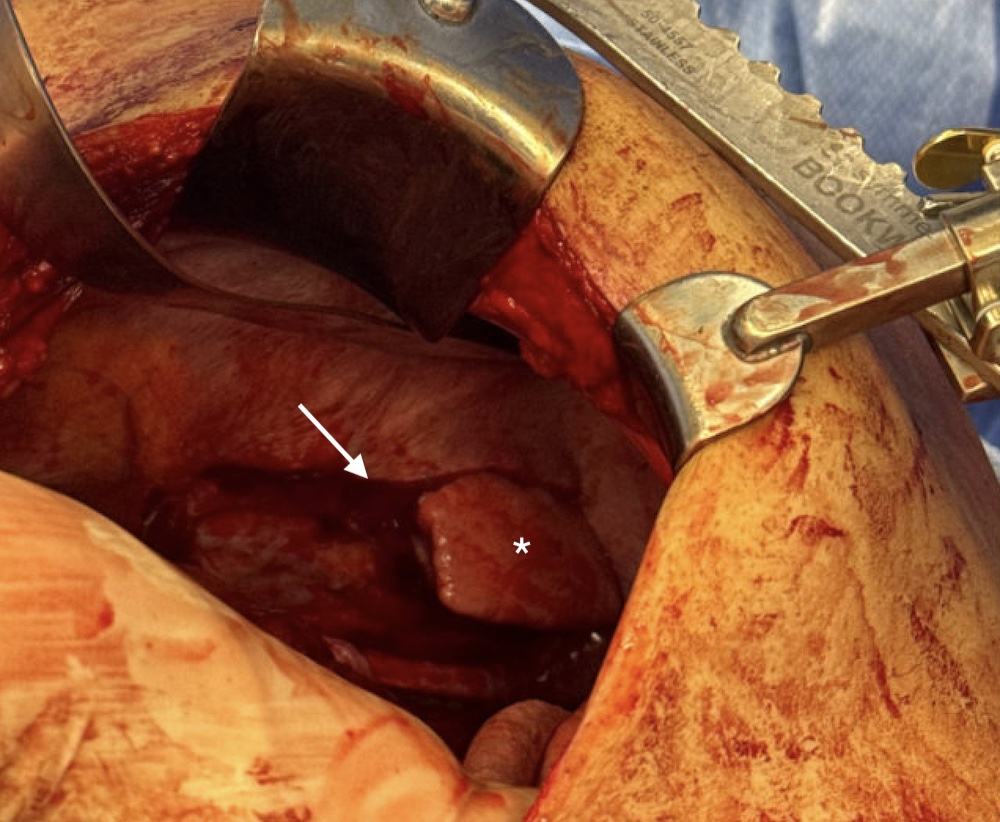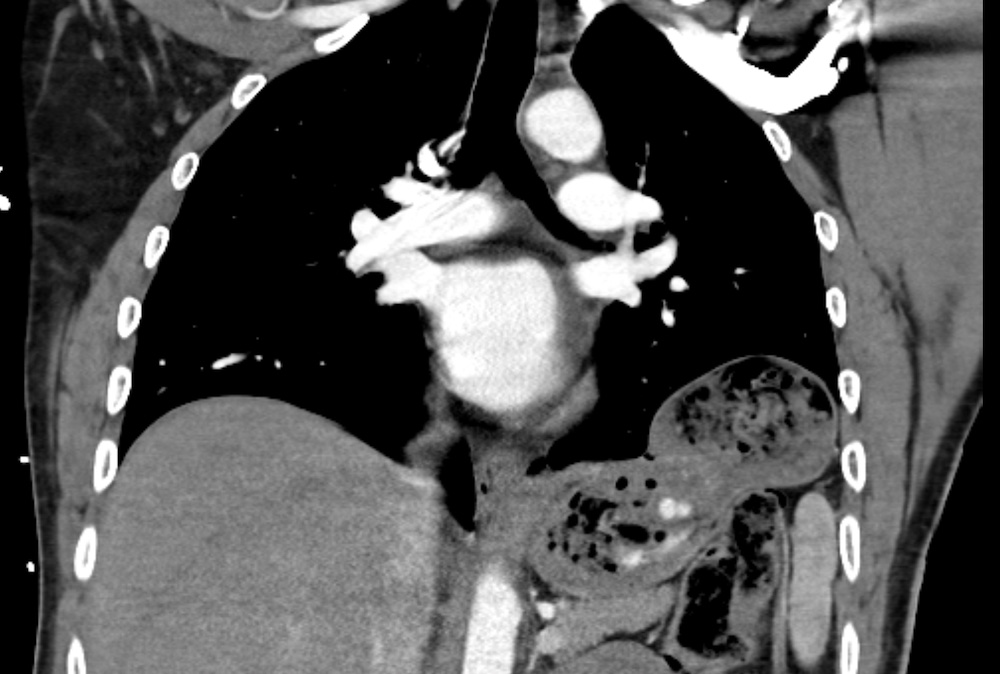Diaphragm Injury
Diaphragm Injury
David Ray Velez, MD
Table of Contents
General
Definition: Injury of the Diaphragm
Most Common After Blunt Trauma
Site
- Most Common on the Left
- Most Common in the Posterolateral Aspect of the Hemidiaphragm Between the Lumbar and Intercostal Muscle Slips (Weakest Point)
Most Common Herniated Organs: Stomach and Colon
Complications
- Respiratory Failure
- Strangulation of Herniated Contents
- Bowel Obstruction
- Gastric Volvulus
- Tension Gastrothorax
AAST Diaphragm Injury Scale
- *See AAST
- Injury Scale is Under Copyright
Typical Severity by Mechanism
- Stabs and Low-Velocity GSW: Grade I-II
- Blunt Trauma: Grade III-IV
- High-Velocity GSW, Shotgun, or Explosion: Grade V

Diaphragm Laceration (Arrow) and Herniated Lung (Asterisk)
Diagnosis
Diagnosis Can Be Made Intraoperatively or Radiographically
Sensitivity
- Plain Radiograph: Low Sensitivity (17-62% Sensitivity)
- CT: Best Imaging Modality (56-87% Sensitivity with 75-100% Specificity)
- eFAST/POCUS: Can Detect Signs but Highly Operator Dependent
Radiographic Signs
- Unable to Trace the Normal Diaphragm Contour
- Elevated Hemidiaphragm
- Herniated Abdominal Organs (Gastric Bubble in the Chest)
- Mediastinal Shift
- NG Tube Above the Diaphragm
- Collar Sign (Hourglass Sign): Waist-Like Constriction of Herniated Viscera at the Level of the Diaphragm
- Cottage Loaf Sign: Collar Sign Involving the Liver Herniating Through a Right Diaphragm Defect, Similar Appearance to a Cottage Loaf
- Dependent Viscera Sign: When Lying Supine, Herniated Organs Fall Against the Posterior Ribs Due to Loss of Diaphragm Support
- Indirect Signs:
- Hemothorax
- Hemoperitoneum
- Associated Rib Fracture
- Associated Pulmonary Contusion

Traumatic Diaphragmatic Hernia on CXR

Collar Sign on CT
Treatment
Treatment
- Contusion (Grade I): Conservative
- Laceration (Grade II-V): Surgical Repair
Surgical Repair
- Generally Repaired Primarily
- Classically Described Using Permanent Sutures (Prolene) in Horizontal Mattress Fashion
- Use Mesh if Large or Under Tension
- Use Permanent Mesh
- Consider Incision of Peripheral Attachments and Reattachment 2-3 Interspaces More Cephalad if Necessary
- Reattach Diaphragm to Ribs if Completely Avulsed
- Place Sutures Circumferentially Around the Ribs
- May Also Consider Using Rib Suture Anchors
Surgical Timing/Approach
- Early Diagnosis (< 1 Week): Transabdominal Approach
- Delayed Diagnosis (> 1 Week): Transthoracic Approach
- To Evaluate Viscera and Adhesions
